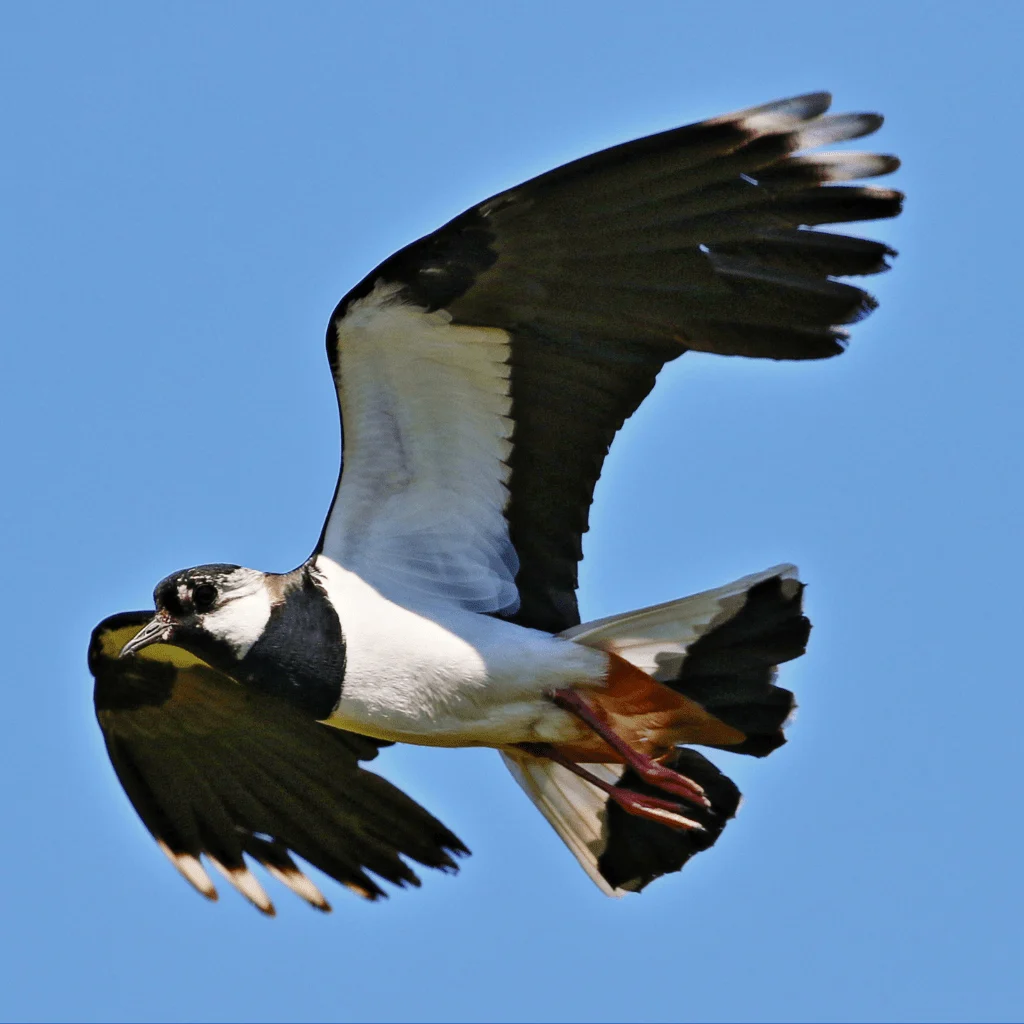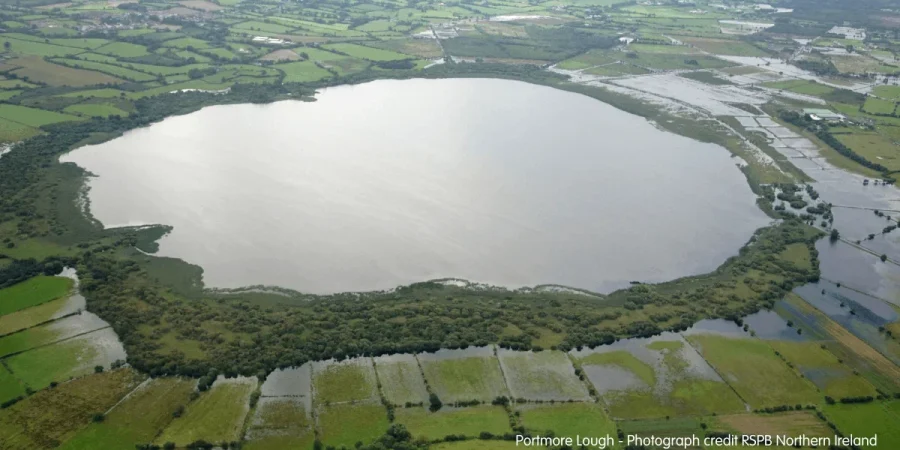The recovery of lapwings at Portmore Lough ASSI required almost a decade of research and monitoring, followed by another decade of wet grassland habitat restoration, and sustainable management.
Potential site for breeding
In 1986, a baseline survey for breeding waders was conducted across Northern Ireland. Lough Neagh and Lough Beg were among the most important sites, contributing to the decision to designate as ASSIs in subsequent years. In 1986, Portmore Lough was showing potential for breeding waders, with the right land management targeted towards species. While there were no lapwings recorded breeding at that time, the site was showing potential for recovery, if swift and targeted action were to be taken.

The solution
RSPB NI established the Portmore Lough Nature Reserve in the early 1990s, and conducted surveys and research on the 100ha wet grassland area that had previously been surveyed in 1986. This long-term monitoring concluded that scrub that had grown up along the shoreline to invade the fen and reedbed, was a barrier to lapwings breeding at the site, hence the 1986 baseline. A decision was reached with NIEA to create conditions for lapwings to breed at Portmore Lough ASSI, by removing 8ha of invading scrub from the south-west shore of Portmore Lough, opening up the wet grassland to the lough shore, while restoring fen and reedbed. The removal of invading scrub took place between 2007 and 2008.
The results
The focused approach worked. The site began attracting breeding lapwings, and now attracts 30 – 40 breeding pairs annually. To help protect nests and chicks from predation, predator proof fencing was erected and is maintained annually on the reserve. Portmore Lough is now a demonstration site for the restoration of wet grassland from invading scrub, for recovery of lapwings/breeding waders around Lough Neagh/Beg.
Going forward
Long-term focus and support is required to ensure knowledge transfer leads to the restoration of other sites around Lough Neagh. This should include targeted approaches to scrub and rush control, and measures to protect breeding waders from predation, such as predator fencing, as a stop gap while the wider landscape is managed sympathetically to minimise the numbers of predators in the area. Targeted breeding wader recovery should also come with resources to monitor birds and track their response to the work.
Learn more about the work being undertaken at Portmore Lough
Learn more about what Northern Ireland is doing to become "Nature Positive" and combat biodiversity decline
The Northern Ireland Environment Agency (NIEA) is one of 5 UK statutory nature agencies to produce a joint Nature Positive 2030 Report, published on 22nd September 2021.
The Nature Positive 2030 Report sets out how the UK can meet its commitments in the Leaders’ Pledge for Nature, and ensure that nature’s recovery plays a critical role in our path to Net Zero.
Multi-award winning author and naturalist from Northern Ireland, Dara McAnulty explains why we need to act now to tackle biodiversity loss and climate change.



